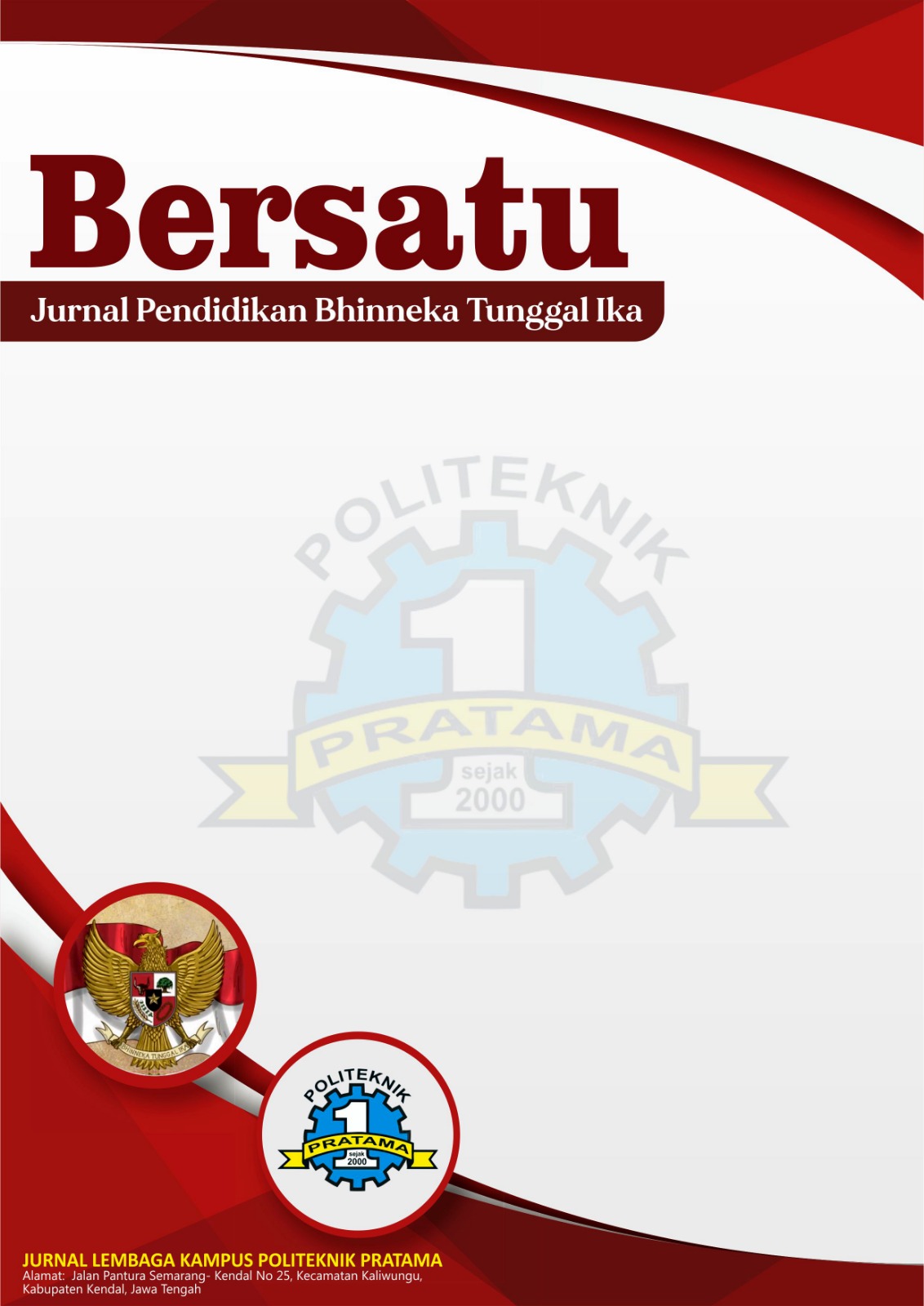Identitas Etnis Arab Dan China Di Surabaya
DOI:
https://doi.org/10.51903/bersatu.v1i6.486Keywords:
Tolerance, Chinese Ethnicity, Arab EthnicityAbstract
Multicultural means consisting of various ethnicities, religions, races and cultures, one of the things that the Indonesian people are grateful for because they can understand the differences between various styles and societies. One of the tribes that is of concern is the Arab and Chinese tribes, where these two tribes have many differences, starting from cultural habits and so on. This is interesting because the differences between the two are whether they are the beginning of division or the beginning of unity. Including in Suabaya itself there are two villages representing Arab and Chinese tribes. The Arab ethnic group found in the city of Surabaya or more in the Sunan Ampel area is mostly no longer native to the Arab ethnic group, but rather a mixture of Arab and Javanese ethnicities, but even so, the biological characteristics of the Arab ethnic group continue to be inherited by people who are of ethnic descent. the Arabic. so that we can distinguish whether they are of Arab ethnic descent or not, one of them is through their physical appearance, where women of Arab ethnic origin have sharp noses and white skin and they also always decorate their faces with black eyeshadow wherever they are, whereas for women Men of Arab ethnicity also have sharp noses and long or bushy beards.
Meanwhile, the Chinese tribe stands with a characteristic physical form such as slanted eyes and another cultural tradition in Chinatown village, namely the moon cake celebration. This moon cake is shaped like the moon, namely round and contains various kinds of fillings such as nuts. This makes tolerance the basis for caring for differences, such as different livelihoods and different habits. This must be the framework for caring for unity. Their characteristics must be well cared for but also not abandon their mutual respect for each other. This is the essence of Indonesia's goal in the 1945 Constitution, namely to become a sovereign, independent, united, prosperous and prosperous country.
References
Adinda, Reza Ela & Romadhona, Mahimma. 2021. “Perancangan Identitas Visual Pada Grafis Lingkungan Kampung Arab Surabaya”.
Muhaeminah, Siti. 2007. Perayaan Zong Qiu Jie Di Klenteng Hok Teng Ceng Sin Cibinong
Ratna Dewi Nur’aini. 2020. PENERAPAN METODE STUDI KASUS YIN DALAM PENELITIAN ARSITEKTUR DAN PERILAKU. file:///C:/Users/Asus/Downloads/31319-81719-1-SM.pdf
Diba Sofinadya,2022, PRAKTIK TOLERANSI ETNIS CINA DAN ARAB DI SURABAYA, SURABAYA, UNESA PRESS.
DEA ANDRE ALAMSYAH,2019,HARMONISASI ETNIS ARAB DAN CINA DI SURABAYA,SURABAYA, UNESA PRESS
Eriyanti, F. (2006). Dinamika posisi identitas etnis Tionghoa dalam tinjauan teori identitas sosial. Jurnal Demokrasi, 5(1).
Amin, Z. N., Loekmono, J. L., Sofyan, A., & Mulyawati, V. (2020). Kontribusi identitas etnis dan identitas akademik terhadap subjective well-being mahasiswa. Biblio Couns: Jurnal Kajian Konseling Dan Pendidikan, 3(2), 67-73.
Fathurroja, A., Mumtazah, H., Rosiana, R., Pudoli, S. B. M., & Fridayanti, F. (2018). Gambaran identitas etnis remaja Suku Jawa dan Sunda. Jurnal Psikologi Islam dan Budaya, 1(2), 107-112.
Susetyo, D. B. (2002). Krisis Identitas Etnis Cina di Indonesia. Psikodimensia-Kajian Ilmiah Psikologo, 2, 61-71.
Tanasaldy, T. (2007). Politik Identitas Etnis di Kalimantan Barat. Politik lokal di Indonesia, 461-490.
Tarakanita, I., & Cahyono, M. Y. M. (2013). Komitmen identitas etnik dalam kaitannya dengan eksistensi budaya lokal. Jurnal Zenit, 2(2), 1-14.
Hali, D. J. (2006). Konflik Identitas (Etnis) dan Harga Diri. Jurnal Hukum Pro Justitia, 24(3).
Zaini, M. R. (2015). Perjalanan Menjadi Cina Benteng: Studi Identitas Etnis di Desa Situgadung. MASYARAKAT: Jurnal Sosiologi, 93-127.
Kafaabillah, D. (2018). Nama Marga sebagai Identitas Budaya Masyarakat Etnis Arab. Litera, 17(2).
KhusnahAmalia, D. (2017). Hubungan Familial Ethnic Socialization Dengan Identitas Etnis Pada Remaja Etnis Arab (Doctoral dissertation, Universitas Brawijaya).
NURPROJO, I. S. (2019). Relasi Bisnis dan Politik Paska Orde Baru: Kontestasi Pebisnis Tionghoa dan Arab di Ranah Lokal (Doctoral dissertation, Universitas Gadjah Mada).
Mahzumi, F. (2018). Dualisme Identitas Peranakan Arab di Kampung Arab Gresik. Teosofi: Jurnal Tasawuf dan Pemikiran Islam, 8(2), 406-432.
Haryono, T. J. S. (2013). Integrasi Etnis Arab dengan Jawa dan Madura di Kampung Ampel Surabaya. Vol. II, Januari-Juni. BioKultur: Surabaya.
Soedarso, S., Nurif, M., Sutikno, S., & Windiani, W. (2013). Dinamika Multikultural Masyarakat Kota Surabaya. JURNAL SOSIAL HUMANIORA (JSH), 6(1), 62-75.
Adinda, E. R., & Romadhona, M. (2021). PERANCANGAN IDENTITAS VISUAL PADA GRAFIS LINGKUNGAN KAMPUNG ARAB SURABAYA. AMARASI: JURNAL DESAIN KOMUNIKASI VISUAL, 2(02), 237-243.
Indahyati, N. (2014). Pernikahan Antar Etnis Arab dan Jawa Di Kelurahan Ampel Kecamatan Semampir Kota Surabaya (Doctoral dissertation, UIN Sunan Ampel Surabaya).
Nissa, K., & Perwira, A. (2022). TOLERANSI MASYARAKAT DI SURABAYA TERHADAP ETNIS TIONGHOA. Jurnal Pendidikan Sosial Keberagaman, 9(2), 8-16.











.png)
